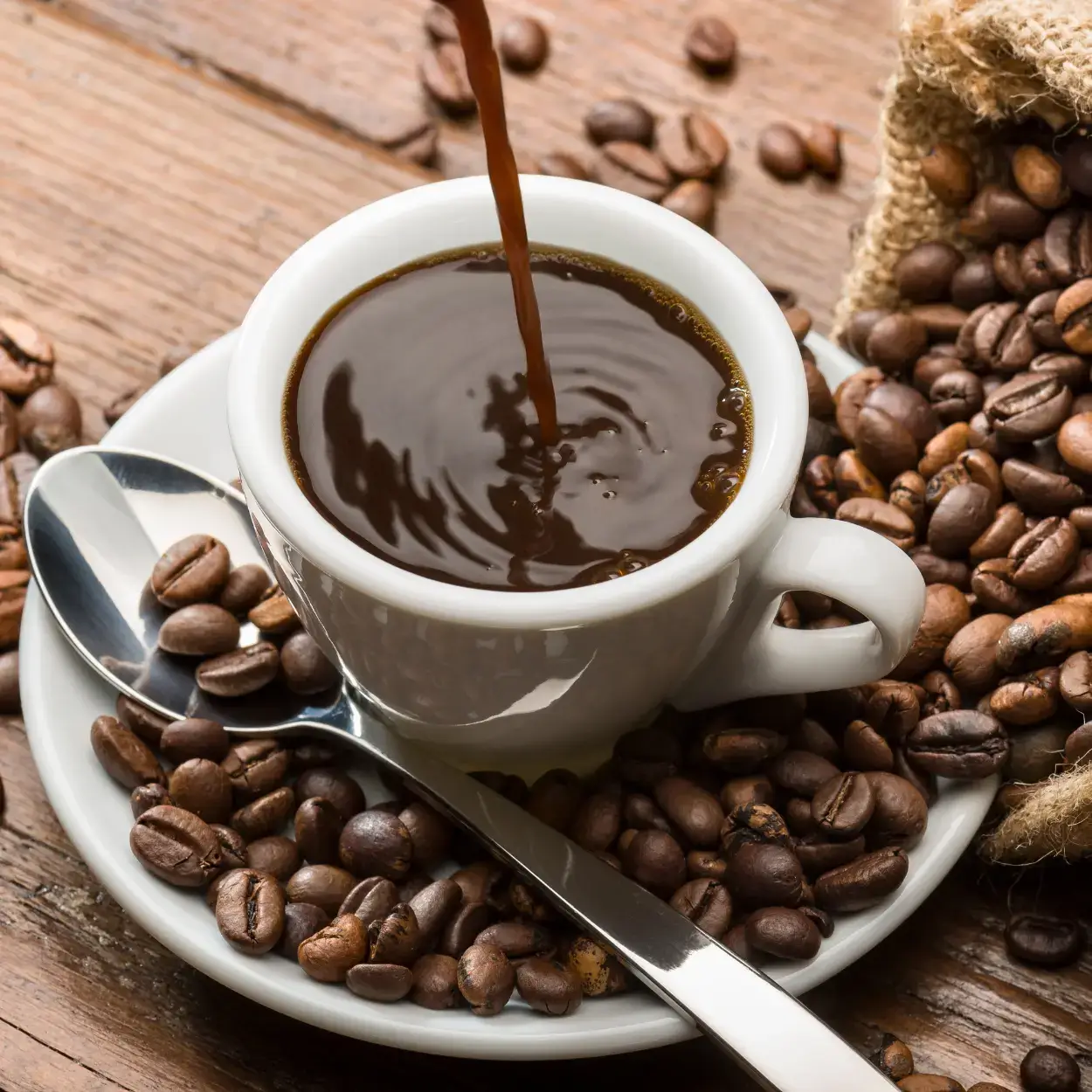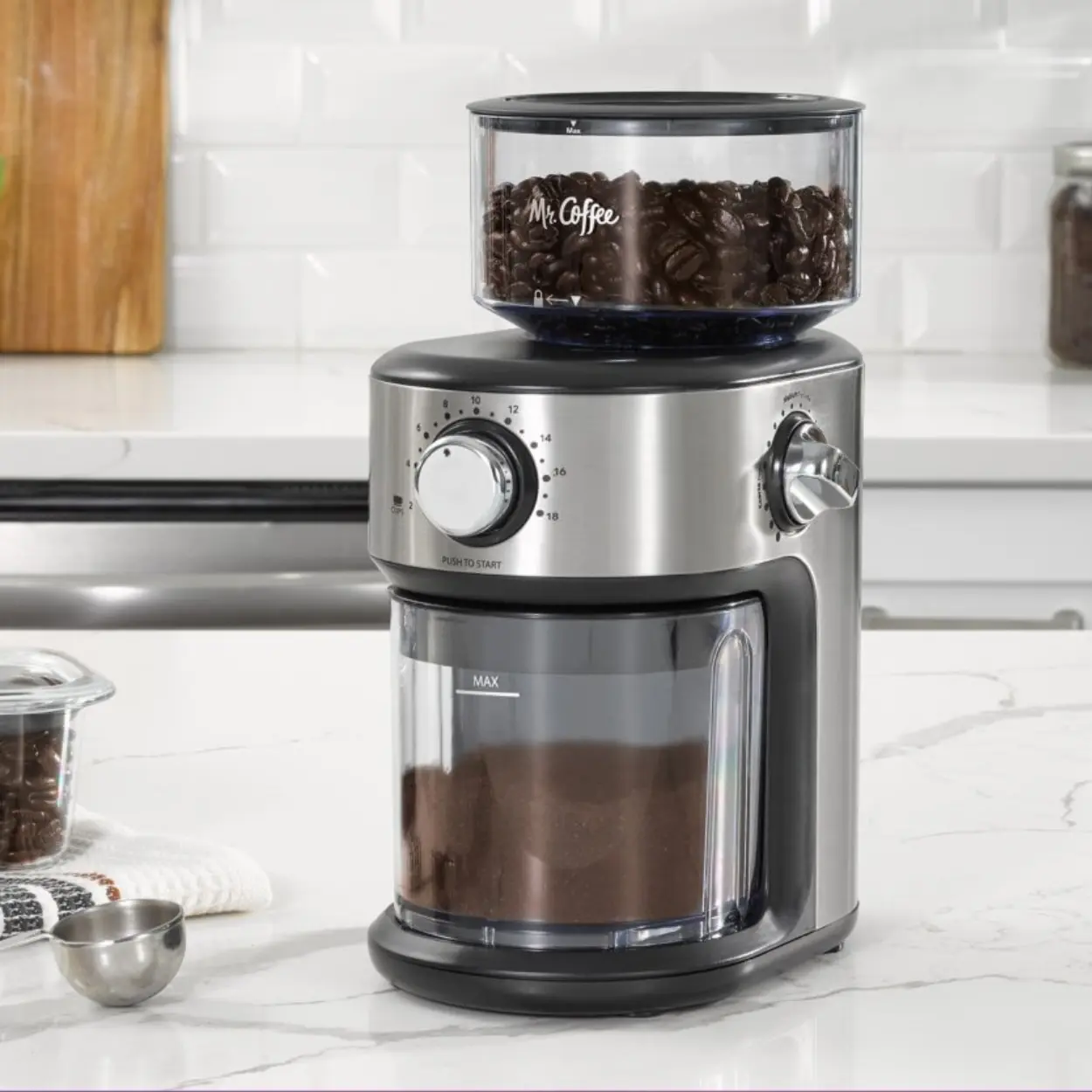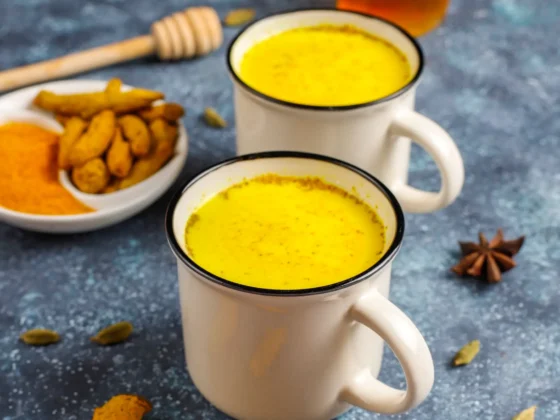Are you a coffee aficionado looking to understand the nutritional aspects of your daily brew? While many view coffee as a zero-calorie indulgence, the truth is far from that simple notion. This comprehensive guide aims to demystify the concept of coffee calories by delving into every facet that contributes to the calorie count. From the minimal caloric impact of raw coffee beans to the substantial increase in calories when additives like milk and sugar come into play, we will unravel all the elements that define the calories in coffee. Whether you’re calorie-conscious or just curious, this guide will empower you to make more informed decisions about your coffee choices.
Calories in Coffee: Key Takeaways
- Calories in Coffee Vary Widely: Coffee’s caloric content can range from virtually zero calories in black coffee to more substantial amounts when additives like milk, sugar, and syrups are included.
- Health Benefits Beyond Calories: While coffee itself may have minimal nutritional value, its antioxidants, and potential metabolism-boosting effects can contribute to a healthier lifestyle.
- Brewing Methods Matter: Different brewing methods, from espresso to cold brew, can influence the taste and caloric content of your coffee. Understanding these variations allows you to tailor your choices to your preferences and dietary goals.
- Mindful Additive Usage: Sweeteners and creamers can quickly escalate the calorie count of your coffee. Opting for alternative sweeteners or using low-calorie coffee creamers can help strike a balance between taste and calories.
- Global Coffee Cultures and Calories: Exploring coffee traditions from around the world reveals the diverse ways coffee is prepared and consumed. From the calorie-conscious Italian espresso to the indulgence of Turkish coffee and Asian variants, understanding these cultural nuances can enrich your coffee experience.
The Basics of Coffee Calories

Understanding the caloric makeup of your favorite coffee drinks is crucial for anyone mindful of their dietary intake. While many think of coffee as a calorie-free option, the reality is more nuanced. The variations in coffee preparation, size, and additional ingredients significantly influence the final calorie count.
Understanding Raw Coffee Beans and Their Caloric Content
The starting point for any coffee beverage is the humble coffee bean. Raw coffee beans themselves have minimal calories, and when brewed into a standard 8-ounce cup of black coffee, the result contains just 2 calories. (1) The type of bean can have a minor impact on the caloric content, but this is usually negligible.
- Type of Bean: Arabica and Robusta are the most common varieties, but their caloric differences are minor.
- Preparation Method: Brewing methods like drip, French press, or espresso do not significantly alter the basic calorie count of black coffee.
In summary, when it comes to the caloric content of raw coffee beans, the differences are minor and mostly negligible when brewed without additives.
Decaffeinated vs. Regular: Is there a Calorie Difference?

Another common query revolves around decaffeinated coffee and whether it has a differing caloric content compared to regular coffee. Generally, the caloric difference between decaffeinated and regular coffee is minimal. Both options remain low in calories, especially when consumed without additives like sugar or milk.
- Decaffeinated Coffee: Roughly the same calorie count as regular coffee.
- Regular Coffee: Offers a slightly higher caffeine content but similar calories in coffee.
Overall, while decaffeinated coffee may lack the caffeine kick, it doesn’t significantly differ from regular coffee in terms of calories.
How Additives (Milk, Sugar, Syrups) Affect Caloric Value
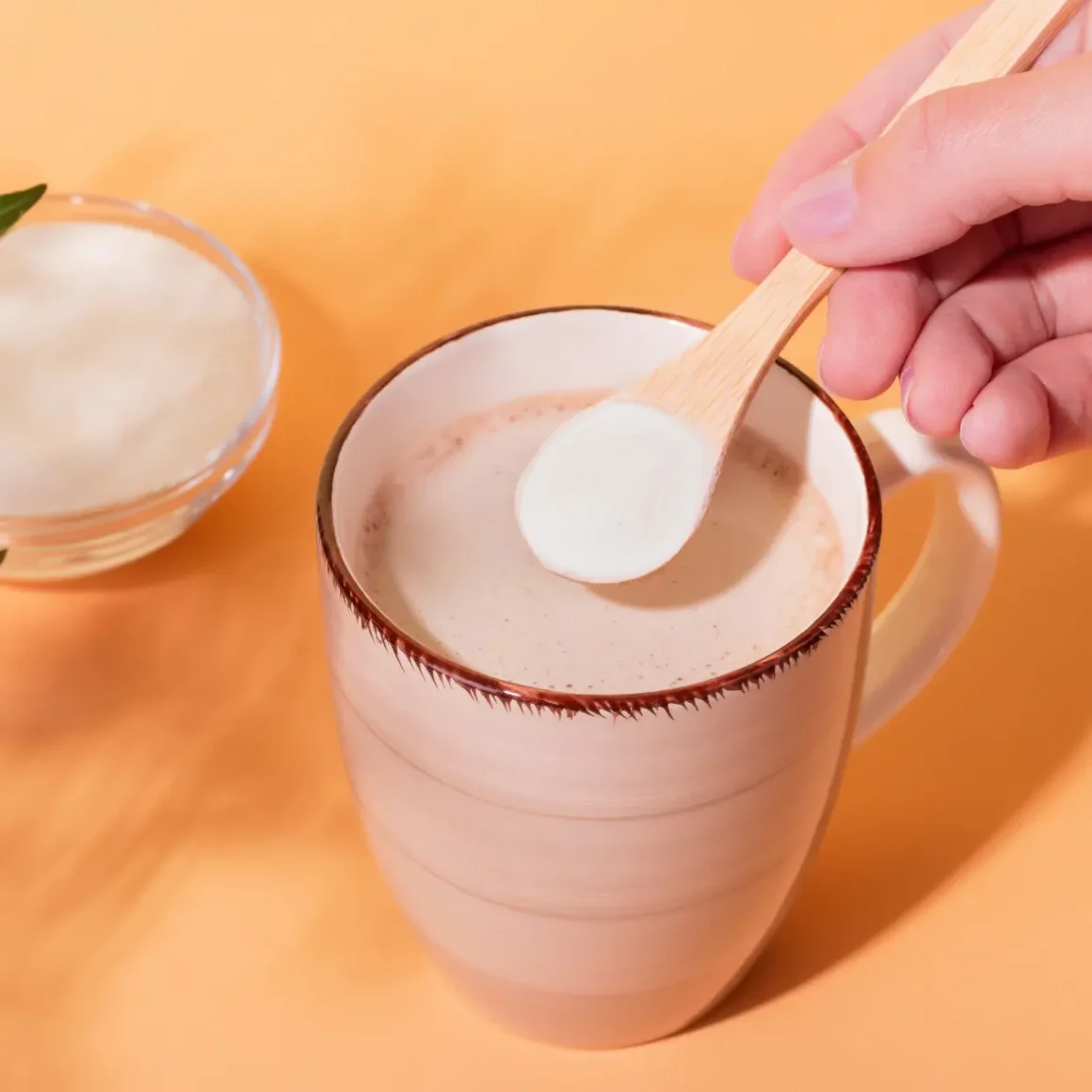
One of the biggest factors affecting coffee calories is the addition of elements such as milk, sugar, and flavored syrups. These additives can quickly escalate the calorie count of your cup of Joe.
- Milk: A latte made with skim milk contains around 80-90 calories, but whole milk can bump it up to a higher range.
- Sugar: Each teaspoon of sugar adds approximately 48 calories.
- Flavored Syrups: These can vary widely but generally add significant calories; for example, an 8-ounce mocha with chocolate syrup holds about 175 calories.
If you are looking for ways to reduce the calories in your coffee, consider options like smaller servings, black coffee, or cutting back on additives. Lessening the amount of added sugar and dairy can be an effective way to manage your coffee calories.
To sum up, understanding the components that contribute to the caloric value of your coffee can help you make more informed choices, whether you are counting calories or simply curious about what goes into your cup.
Brewing Methods and Their Impact
The way you brew your coffee can have a subtle but important effect on its calorie content. Although the base coffee itself is low in calories, certain brewing methods can influence the extraction process, affecting not just the flavor but also the caloric profile of your cup. Below, we delve into how specific brewing methods impact the calories in your coffee.
Espresso vs. Drip Coffee: A Caloric Showdown
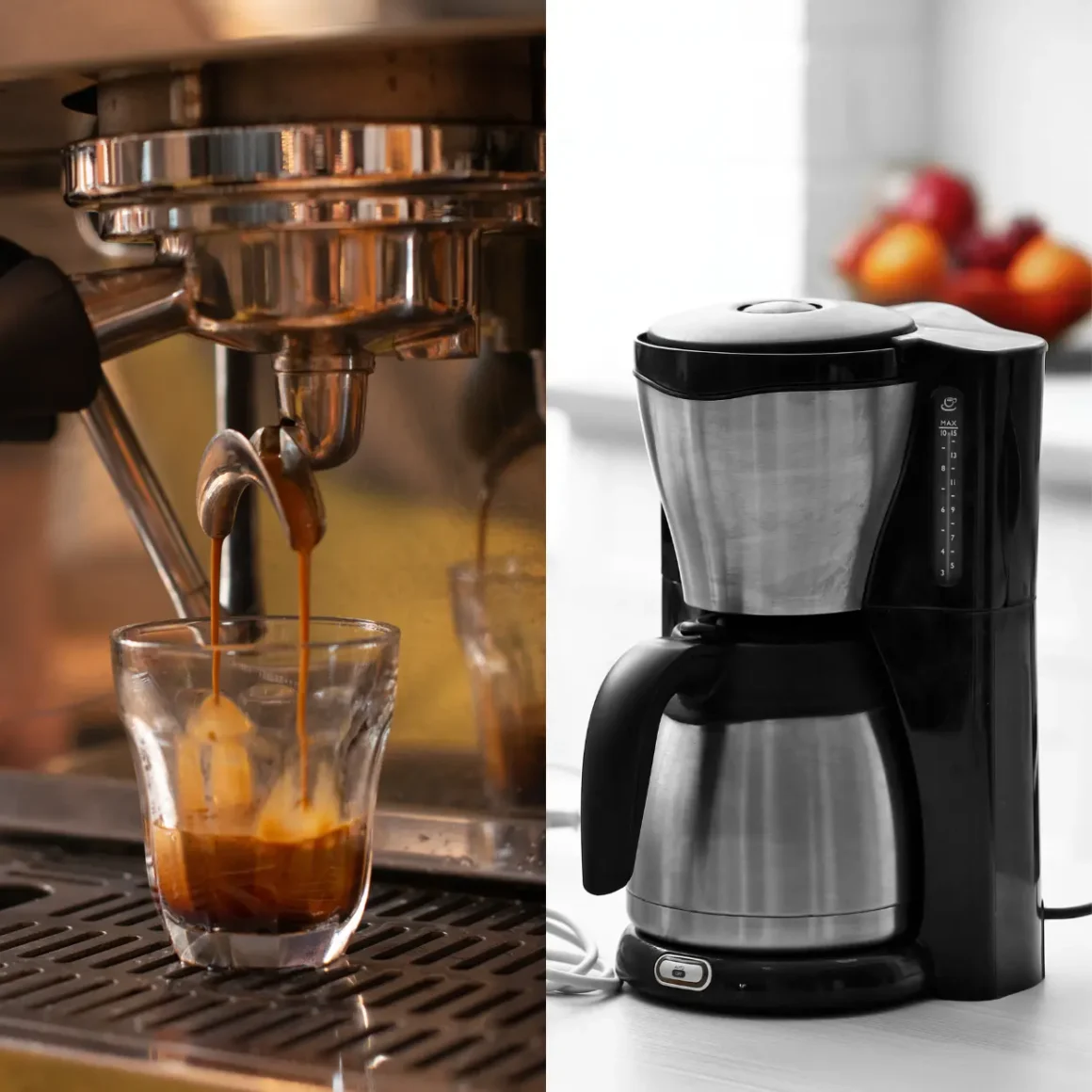
When it comes to espresso and drip coffee, there’s often a debate about which one packs more punch, not just in caffeine but also in calories.
- Espresso: A single shot of espresso usually contains around 1 to 2 calories. Because it’s a concentrated form of coffee, many assume it’s higher in calories. However, this isn’t the case. (2)
- Drip Coffee: A standard 8-ounce cup of drip coffee also contains approximately 2 calories, making it quite similar to an espresso shot in terms of caloric content.
In essence, neither espresso nor drip coffee has a significant caloric advantage over the other. Both remain low-calorie options when consumed without additives like cream or sugar.
The Cold Brew and Its Surprising Caloric Content
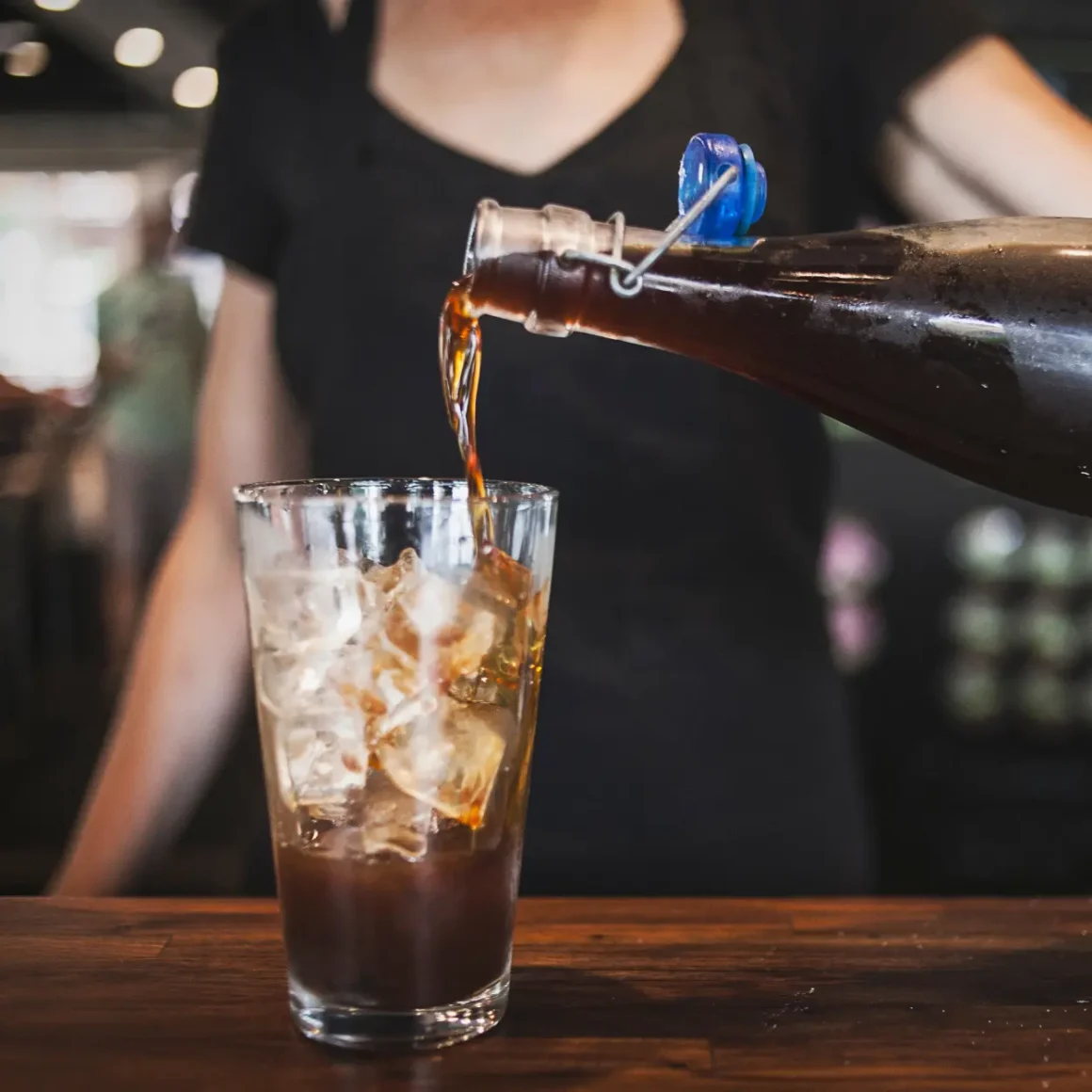
Cold brew coffee has gained popularity for its smooth, low-acid profile, but what about its caloric impact?
- Cold Brew: A standard 8-ounce cup of cold brew coffee typically contains around 2 calories, similar to hot brewed methods.
- Concentration Factor: Cold brew is often made as a concentrate, which can be diluted. This means that the calorie content remains low unless additives are used.
Surprisingly, the caloric content of cold brew isn’t significantly different from other brewing methods when consumed black. It remains a low-calorie option if you forgo additives like sweeteners or cream.
The Low-Cal French Press? Debunking Myths
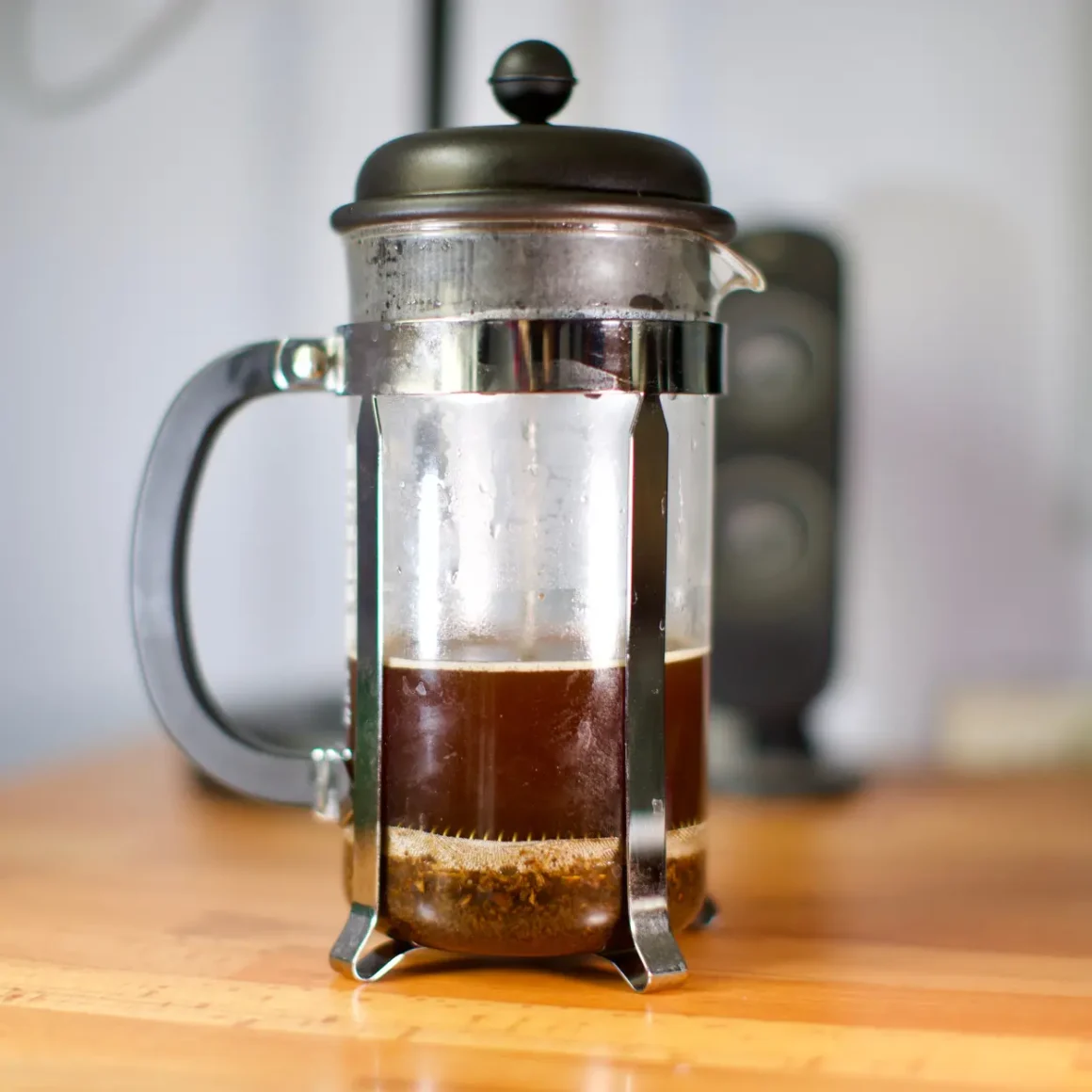
The French Press method is often thought of as a higher-calorie option due to its rich and full-bodied flavor. However, this is largely a myth.
- French Press: An 8-ounce cup of French Press coffee contains approximately 2 calories, which is in line with other brewing methods.
- Oil Extraction: The French Press brewing method does extract more oils from the coffee grounds, but this doesn’t significantly impact the calorie count.
In summary, despite its richer taste, French Press coffee doesn’t add any extra calories to your cup. It remains a low-calorie choice, just like espresso, drip coffee, and cold brew, especially when enjoyed without any additional ingredients.
By understanding the impacts of different brewing methods on your coffee’s caloric content, you can make more informed choices to suit your dietary needs or preferences.
Health Impacts of Coffee and Its Calories
When it comes to coffee, most conversations revolve around its rich aroma, the sense of comfort it provides, or the much-needed energy boost it delivers. But have you ever stopped to consider the health implications of your daily cup of Joe? While coffee itself is low in calories, understanding the broader health impacts of your caffeine habit can be eye-opening. So read on to discover how coffee and its calories influence various aspects of your health.
Does Coffee Boost Metabolism and Burn Calories?

Though coffee itself is low in calories, its caffeine content has been shown to accelerate metabolism and contribute to weight loss. A meta-analysis revealed that caffeine can help with weight management by increasing the rate of fat-burning and reducing BMI. (3)
- Metabolism Boost: The caffeine in coffee elevates metabolic rate, which in turn helps burn more calories.
- Exercise Performance: Studies suggest that a pre-workout caffeine dose of 3mg/kg can increase fat loss during physical activity. However, this is more effective in people who don’t regularly exercise.
- BMI Influence: Though it’s a flawed measure, Body Mass Index (BMI) can be slightly affected by regular caffeine intake due to its impact on metabolism.
In sum, while coffee may not be a miracle weight-loss solution, it does offer some metabolic advantages when consumed in moderation.
The Positive Side: Antioxidants and Coffee

Coffee is not just a caffeinated beverage; it’s also a source of antioxidants, which are beneficial for your health. A 2017 review in the British Medical Journal highlighted that coffee contains over 1,000 bioactive compounds, many of which have antioxidant properties.
- Heart Health: Moderate coffee consumption has been linked with a reduced risk of heart failure.
- Diabetes Prevention: Both regular and decaffeinated coffee have been shown to lower the risk of developing type 2 diabetes by 33%.
- Liver Benefits: Research indicates that coffee can protect the liver from diseases like cirrhosis.
- Anti-Cancer Properties: Some studies have found that coffee consumption can reduce the overall incidence of certain types of cancer.
So, beyond the caffeine, the antioxidants in coffee offer multiple health benefits that should not be overlooked.
The Balance: Coffee Consumption and Weight Management
Striking a balance between enjoying your coffee and managing its caloric content can be challenging but is crucial for overall health. When additives like sugar, milk, or flavored syrups enter the mix, coffee calories can quickly pile up.
- Caloric Additives: Milk, sugar, and syrups are the primary contributors to how many calories are in a cup of coffee when additives are included.
- Smarter Choices: Opting for skim milk or cutting back on sugar can significantly reduce the calories in coffee.
- Portion Control: Paying attention to the size of your coffee serving can also help in caloric management.
- Nutritional Trade-offs: While coffee itself may not offer much nutritional value, its health benefits in terms of antioxidants and potential metabolism-boosting properties can compensate.
Ultimately, being mindful of what you add to your coffee can help you enjoy the beverage’s health benefits without compromising your dietary goals.
Low-Calorie Coffee Choices

For many, a cup of coffee is more than just a caffeine fix; it’s a daily ritual, a moment of indulgence. But as you reach for that mocha or iced caramel latte, have you ever thought about the caloric impact of your coffee habit? The good news is that enjoying a flavorful coffee doesn’t have to be a high-calorie affair. Below, we offer tips, recipes, and alternative sweeteners that can help you savor the taste while cutting the calories.
Tips for a Flavorful Yet Low-Cal Coffee
When it comes to a delicious cup of coffee that’s also low in calories, there are several strategies you can employ. For starters, black coffee is your best friend; black coffee calories are negligible, usually around just 2 calories for an 8-ounce cup.
- Choose the Right Beans: Opt for high-quality, fresh beans that offer a richer flavor, so you won’t miss the extras like sugar and cream.
- Brewing Technique Matters: Techniques like cold brew or Aeropress can bring out nuanced flavors, minimizing the need for high-calorie additives.
- Spice It Up: Consider adding calorie-free spices like cinnamon or nutmeg to give your coffee a flavor boost.
- Calibrate Your Coffee Maker: Sometimes, a simple tweak in the coffee-to-water ratio can make a big difference in taste.
In summary, the right techniques and a little creativity can deliver a satisfying cup of coffee that is low in calories but high in flavor.
Popular Low-Calorie Coffee Recipes

There are countless recipes to try if you’re looking to enjoy a tasty yet low-calorie coffee. Whether you’re at home or ordering at a café, you have options.
- Americano: Made with espresso and hot water, it offers the depth of espresso but with minimal calories in black coffee.
- Iced Black Coffee: Perfect for hot days, and the ice dilutes the coffee, making it less intense while still being calorie-free.
- Skinny Latte: Use low-fat or plant-based milk and skip the flavored syrup. For creaminess without the calories, consider a low-calorie coffee creamer.
- Café au Lait with Skim Milk: A happy medium between black coffee and a latte, without the heavy calorie content.
Remember, you don’t have to sacrifice taste to enjoy a coffee with fewer calories.
Exploring Alternative Sweeteners

While sugar might be the go-to sweetener for many, it’s far from the only option available. If you’re trying to reduce how many calories in black coffee get added through sweeteners, consider some of these alternatives.
- Stevia: A plant-based, zero-calorie sweetener that is much sweeter than sugar, so you’ll need less.
- Monk Fruit: Another zero-calorie option, monk fruit sweetener has a unique, fruity flavor.
- Erythritol: A sugar alcohol that has about 70% of the sweetness of sugar but only 5% of the calories.
- Agave Nectar: While not zero-calorie, it’s sweeter than sugar, meaning you can use less to achieve the same sweetness.
Choosing alternative sweeteners can be an effective way to enjoy a sweet cup of coffee without the added calories.
The Cultural Aspect: Coffee Around the World
Coffee is more than just a beverage; it’s a global cultural phenomenon. Each region has its own unique way of preparing, serving, and enjoying coffee. Not only do these methods affect the flavor and experience of coffee drinking, but they also have varying impacts on its caloric content. In this section, we will delve into the caloric aspects of Italian Espresso, Americano, Turkish coffee, and some popular Asian coffee variants.
The Caloric Content of Italian Espresso vs. Americano

Italian espresso and Americano are two classics that have won hearts worldwide, but they differ significantly in both flavor and caloric content.
- Italian Espresso: A small but potent shot, Italian espresso is usually around 1 ounce and contains approximately 2 calories. The focus here is on the concentrated coffee essence, and it rarely includes additives like sugar or cream.
- Americano: Essentially an espresso shot diluted with hot water, an Americano usually falls in the range of 5-10 calories for an 8-ounce serving, depending on the coffee-to-water ratio.
The two coffee types offer very similar calorie counts, given their basis in espresso. However, people often add sugar or cream to an Americano, which can quickly elevate its caloric content.
To sum up, both Italian Espresso and Americano are low-calorie options as long as you refrain from adding sugar or cream.
Turkish Coffee: Rich in Flavor and Calories?

Turkish coffee is an integral part of Middle Eastern culture and is known for its strong flavors and unique preparation methods. However, its rich taste comes at a caloric price.
- Ingredients: Turkish coffee often includes coffee, water, and sugar, making it higher in calories than many other types.
- Serving Size: A typical cup is small but dense, usually holding around 60-70 calories if sugar is added.
- Preparation: The coffee is unfiltered, meaning the grounds settle at the bottom, but no extra calories are added in this process.
Even though Turkish coffee might seem indulgent, its smaller serving size often compensates for the higher caloric content, making it a moderate choice in terms of calories.
Exploring the Calories in Asian Coffee Variants
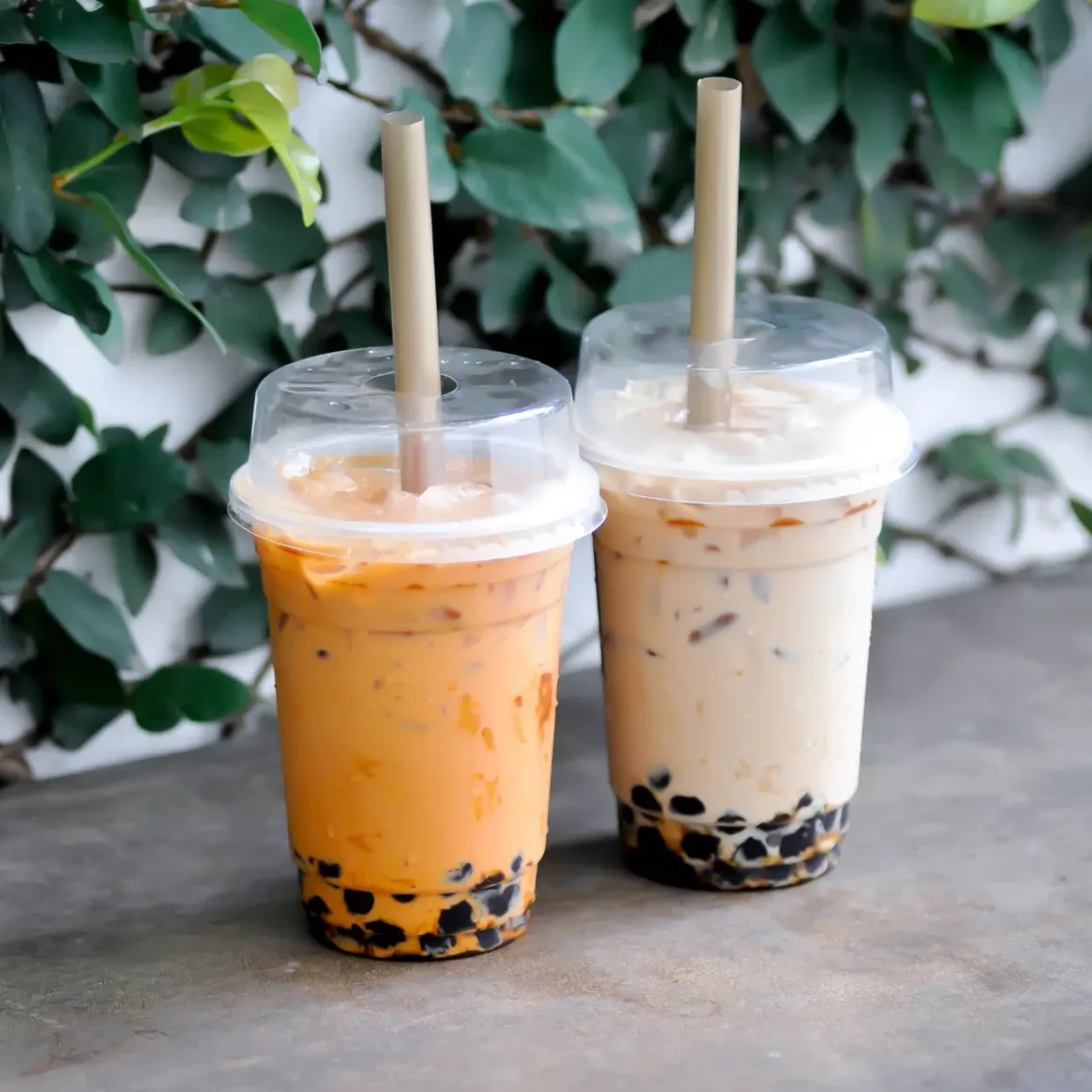
Asia offers a rich tapestry of coffee variations, each with its unique flavors and caloric implications.
- Vietnamese Coffee: Known for its use of condensed milk, a single cup can contain upwards of 150 calories.
- Thai Iced Coffee: Made with sugar, cardamom, and sometimes evaporated milk, this refreshing drink can contain anywhere between 100 to 200 calories.
- Japanese Siphon Coffee: Often consumed black, this intricate brewing method results in a cup of coffee that’s low in calories, similar to black coffee or Americano.
While Vietnamese and Thai coffees tend to be on the higher end of the calorie spectrum, Japanese methods like siphon coffee offer a lower-calorie alternative.
To sum up, coffee’s caloric content can vary significantly depending on its country of origin and preparation method. Knowing these differences can help you make a more informed choice, whether you’re traveling the world or simply exploring international coffees at your local café.
Conclusion
Navigating the complex landscape of coffee calories can be a daunting task, given the vast array of brewing methods, cultural variations, and popular add-ons like sugar and cream. However, as this comprehensive guide has demonstrated, understanding the calories in coffee boils down to a few key factors: the type of coffee, the preparation method, and the ingredients used.
We’ve explored how different brewing methods, from the concentrated Italian espresso to the chilled allure of cold brew, have varying impacts on caloric content. We delved into the health implications of coffee consumption, shedding light on its potential to boost metabolism and its rich antioxidant profile. We also looked at weight management strategies involving coffee and provided tips for making lower-calorie choices without sacrificing flavor.
Additionally, our journey took us around the world, where we discovered that cultural variations like Turkish coffee and Asian variants come with their own caloric considerations.
Whether you’re a casual drinker or a coffee connoisseur, being mindful of coffee calories can help you enjoy this beloved beverage in a way that aligns with your dietary and health goals. Armed with this knowledge, you’re now better equipped to make informed choices, be it at your local café or while experimenting with international coffee styles at home.
FAQ
Does the roast of the coffee bean (light vs. dark) affect its calorie content?
The roast level of coffee beans doesn't significantly alter their caloric content; the primary caloric impact comes from additives and preparation methods.
How do various milk alternatives (almond, oat, soy) alter the caloric value of a coffee?
Milk alternatives like almonds, oats, and soy can affect the caloric value of coffee, with options like almond milk being lower in calories compared to regular dairy milk.
Are there hidden calories in our favorite coffeehouse drinks?
Yes, coffeehouse drinks often contain hidden calories due to added sugars, flavored syrups, and high-calorie toppings, so it's important to be aware of your choices.
Is it true that drinking coffee can help with calorie burn?
Drinking coffee, especially due to its caffeine content, can slightly boost metabolism and contribute to calorie burn, but significant effects require larger doses and are more pronounced in those who are less active.
